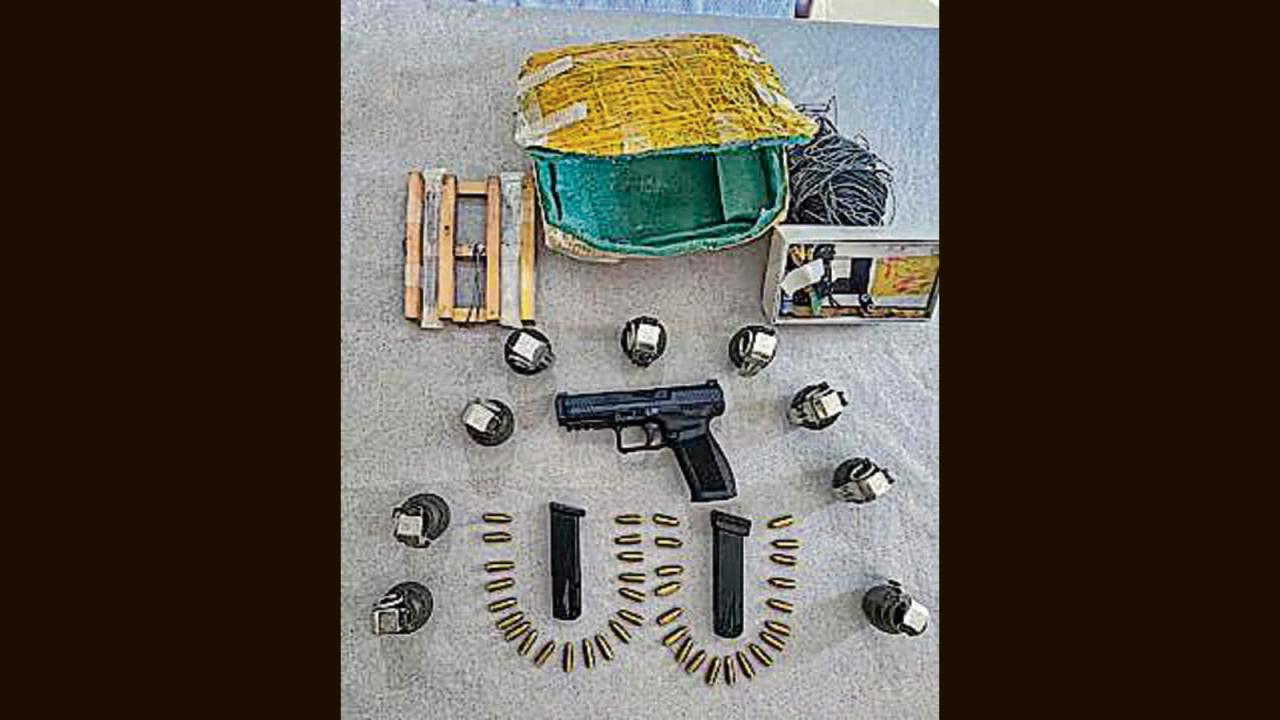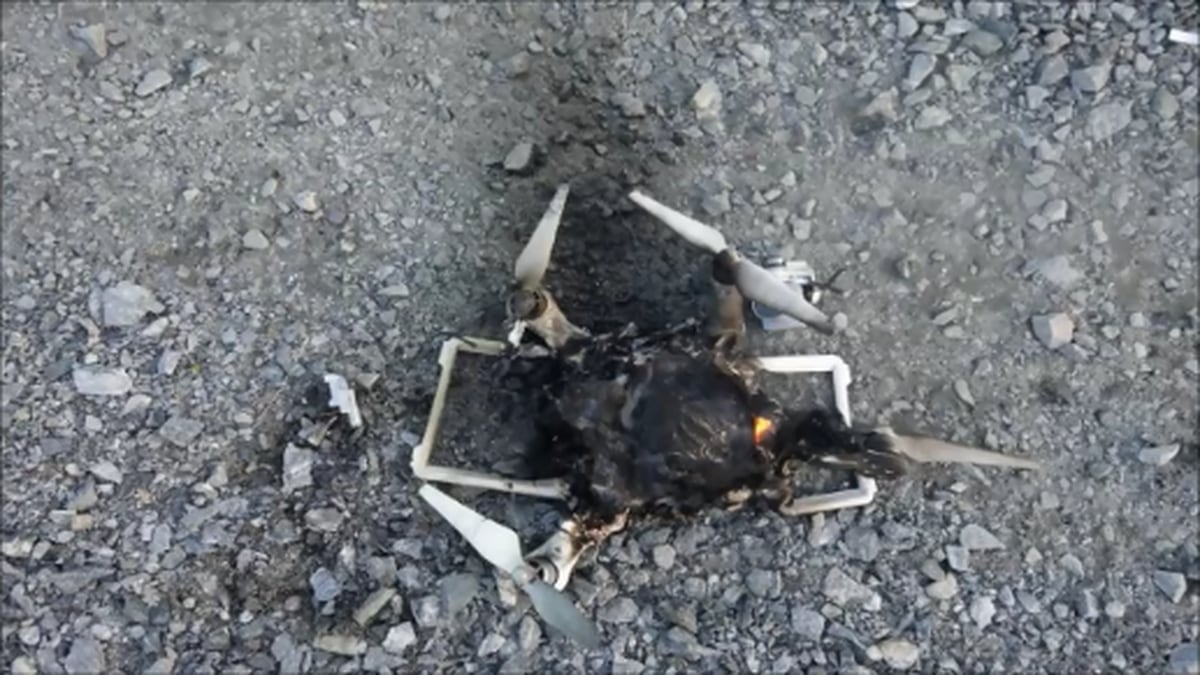Remington drone loads represent a significant advancement in unmanned aerial vehicle (UAV) technology. This guide delves into the intricacies of payload capacity, operational procedures, and the diverse applications of Remington drones across various sectors. We’ll explore the different drone models, their capabilities, and the crucial safety regulations governing their operation, ensuring a thorough understanding of this rapidly evolving field.
From understanding the maximum payload weights and dimensions of various Remington drone models to mastering safe loading procedures and adhering to relevant regulations, this guide offers a practical and informative resource for both novice and experienced drone operators. We’ll also examine the impact of payload weight on flight performance and explore advanced applications in areas such as search and rescue, precision agriculture, and infrastructure inspection.
Remington Drone Models and Payload Capacity
This section details the various Remington drone models, their payload capacities, dimensions, and flight times. Understanding these specifications is crucial for selecting the appropriate drone for specific tasks and ensuring safe operation.
Remington Drone Model Specifications
The following table provides a comprehensive overview of several Remington drone models and their key specifications. Note that these figures are representative and may vary slightly depending on specific configurations and environmental factors.
| Model Name | Payload Capacity (kg) | Dimensions (L x W x H cm) | Maximum Flight Time (minutes) |
|---|---|---|---|
| Remington X1 | 2.5 | 50 x 50 x 20 | 30 |
| Remington X2 | 5.0 | 70 x 70 x 30 | 25 |
| Remington X3 | 10.0 | 100 x 100 x 40 | 20 |
| Remington X4 | 15.0 | 120 x 120 x 50 | 15 |
Design Features Influencing Payload Capacity
The payload capacity of a Remington drone is primarily determined by its frame size, motor power, and battery capacity. Larger frames allow for more robust internal structures and larger battery compartments, supporting heavier payloads. More powerful motors provide the necessary lift for increased weight, while larger batteries extend flight time even with heavier loads. Aerodynamic design also plays a significant role; optimized designs minimize drag, improving efficiency and allowing for greater payload capacity.
Comparison with Competitor Models
Compared to competitor drones in a similar price range, Remington drones generally offer competitive payload capacities. While some competitors might boast slightly higher maximum payload weights for certain models, Remington drones often compensate with superior flight time or advanced features. A detailed comparative analysis requires a model-by-model assessment against specific competitor offerings.
Types of Loads Carried by Remington Drones
Remington drones are versatile platforms capable of carrying a wide array of payloads. Understanding the implications of different payload types on flight performance and safety is crucial for responsible operation.
Common Payload Examples
- High-resolution cameras for aerial photography and videography
- Multispectral and hyperspectral sensors for precision agriculture and environmental monitoring
- LiDAR sensors for 3D mapping and surveying
- Delivery packages for e-commerce and logistics applications
- Thermal imaging cameras for search and rescue operations
Payload Type and Flight Performance
Heavier payloads generally result in reduced flight time and range. The added weight increases energy consumption, leading to a shorter operational window. Aerodynamic drag also increases with larger or less streamlined payloads, further impacting flight performance. For example, carrying a bulky package might reduce range by 20% compared to carrying a lightweight camera.
Safety Procedures and Regulations
Safe payload transport involves adhering to strict procedures and regulations. Payloads must be securely fastened to prevent shifting or detachment during flight. The total weight, including the payload, must never exceed the drone’s maximum takeoff weight. Furthermore, regulations concerning the type of payload (e.g., hazardous materials) must be strictly followed, varying by jurisdiction and payload type.
Remington Drone Loading Procedures and Best Practices: Remington Drone Loads
Proper loading techniques are essential for ensuring safe and efficient drone operation. This section Artikels a step-by-step guide and highlights potential hazards to mitigate.
Step-by-Step Loading Guide, Remington drone loads
- Carefully inspect the drone and payload for any damage or defects.
- Ensure the payload is properly balanced and securely fastened to the designated mounting points.
- Verify that the total weight, including the payload, does not exceed the drone’s maximum takeoff weight.
- Connect any necessary power or data cables.
- Perform a pre-flight check to ensure all components are correctly installed and functioning.
Potential Hazards and Mitigation

Improper loading can lead to various hazards, including payload detachment, loss of control, and damage to the drone. These risks can be mitigated by adhering to the loading procedures, using appropriate securing mechanisms, and regularly inspecting the drone and payload.
Pre-Flight Payload Inspection Checklist
Before each flight, a thorough pre-flight inspection is crucial. This checklist helps ensure all systems are functioning correctly and the payload is secure. A simple checklist might include items such as verifying payload weight, checking cable connections, inspecting securing mechanisms, and confirming that the center of gravity is properly balanced.
Remington drone loads, while generally reliable, can be affected by various factors. Understanding potential issues is crucial, especially considering recent incidents like those detailed in this report on drone crashes in New Jersey , which highlight the importance of pre-flight checks and adherence to safety regulations. Ultimately, proper maintenance and operational procedures remain key to ensuring safe and efficient Remington drone loads.
Impact of Load Weight on Drone Performance

Payload weight significantly influences various aspects of drone performance. This section explores the relationship between payload weight and flight characteristics.
Payload Weight and Performance Metrics
| Payload Weight (kg) | Flight Range (km) | Maximum Speed (km/h) | Battery Life (minutes) |
|---|---|---|---|
| 0 | 10 | 60 | 35 |
| 2.5 | 8 | 55 | 30 |
| 5.0 | 6 | 50 | 25 |
| 7.5 | 4 | 45 | 20 |
Payload Weight and Energy Consumption
Increased payload weight directly translates to higher energy consumption. The drone’s motors must work harder to overcome the increased gravitational force, leading to a faster depletion of the battery. This relationship is not linear; the rate of energy consumption increases disproportionately as the payload weight approaches the maximum capacity. For example, doubling the payload weight might more than double the energy consumption.
Exceeding Maximum Payload Capacity
Exceeding the maximum payload capacity can severely compromise the drone’s structural integrity and operational safety. Overloading can lead to motor failure, loss of control, and potential crashes, resulting in damage to the drone and potentially harm to people or property.
Advanced Applications of Remington Drone Loads
Remington drones find applications across various sectors, often utilizing customized payload configurations for specialized tasks.
Specialized Applications
- Search and Rescue: Thermal imaging cameras, powerful spotlights, and communication equipment are frequently used for locating missing persons or assessing disaster zones.
- Precision Agriculture: Multispectral and hyperspectral sensors help farmers monitor crop health, optimize irrigation, and apply pesticides more efficiently.
- Infrastructure Inspection: High-resolution cameras and LiDAR sensors allow for detailed inspections of bridges, power lines, and other critical infrastructure, identifying potential safety hazards.
Customized Payload Configurations
Many applications require customized payload configurations. For instance, a drone used for pipeline inspection might carry a high-definition camera with specialized lenses and a thermal imager to detect leaks or corrosion. Similarly, a drone deployed for wildlife monitoring might carry a combination of cameras and sensors to capture images and data related to animal behavior and habitat.
Future Potential
The future of Remington drone payloads lies in the integration of emerging technologies. Advancements in sensor technology, artificial intelligence, and autonomous navigation will enable drones to perform increasingly complex tasks, from autonomous delivery systems to advanced environmental monitoring and infrastructure management.
Regulations and Safety Considerations for Remington Drone Loads

Operating Remington drones with various payloads necessitates adherence to relevant regulations and safety guidelines. This section highlights key considerations to ensure safe and legal operation.
Relevant Regulations and Guidelines
Regulations governing drone operations vary by jurisdiction and are subject to change. Operators must be aware of local laws concerning drone registration, licensing, operational airspace, and permitted payload types. Specific regulations regarding the transport of hazardous materials are particularly stringent and require specialized training and certification.
Understanding Remington drone load capacities is crucial for efficient operations. To visualize potential flight paths and assess environmental factors, checking the real-time view from the port dover live camera can be incredibly helpful. This allows for better planning and safer execution of Remington drone loads, ultimately ensuring successful missions.
Scenarios Leading to Accidents or Violations
Improper loading, exceeding maximum payload capacity, operating in restricted airspace, and failing to comply with relevant regulations can lead to accidents or violations. For example, overloading a drone can cause a catastrophic failure mid-flight, while operating in restricted airspace without authorization can result in hefty fines or legal repercussions.
Certification and Licensing Requirements
Specific types of payloads might require additional certifications or licenses for operation. For example, transporting hazardous materials or conducting commercial operations often mandates specific training and certifications. Operators must ensure they possess the necessary qualifications and permits before undertaking such activities.
Ultimately, responsible and efficient management of Remington drone loads is paramount for ensuring safe and successful operations. By understanding the factors affecting payload capacity, adhering to safety protocols, and staying informed about relevant regulations, operators can unlock the full potential of these versatile UAVs while mitigating risks. The future of Remington drone technology promises even greater advancements, driving innovation across multiple industries.
FAQ Guide
What is the warranty on Remington drone batteries?
Warranty information varies by model and purchase location. Consult your retailer or the Remington website for specific details.
How often should I calibrate my Remington drone’s sensors?
Sensor calibration frequency depends on usage. Refer to your drone’s manual for recommended schedules and procedures.
Are there any restrictions on flying Remington drones near airports?
Yes, strict regulations govern drone operation near airports. Check with local aviation authorities for specific restrictions in your area.
What type of insurance is recommended for operating Remington drones commercially?
Commercial drone operation often requires specialized liability insurance. Consult an insurance professional for appropriate coverage.